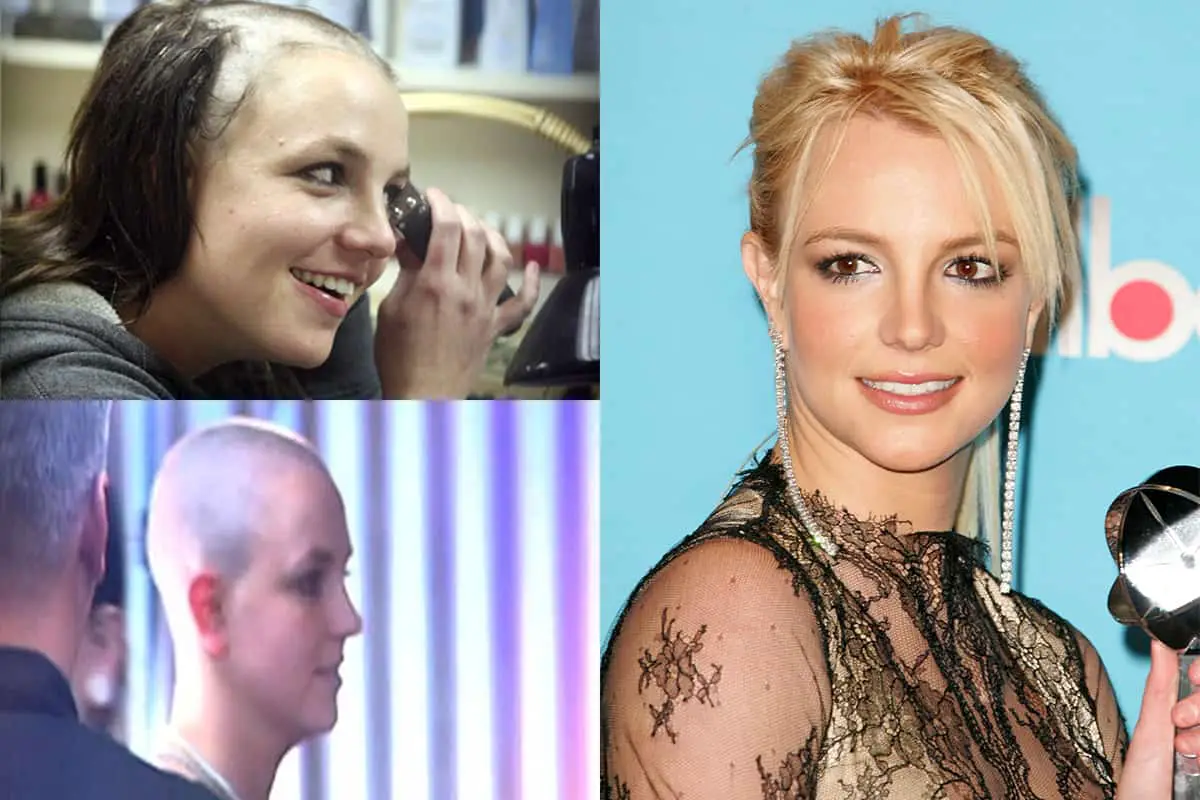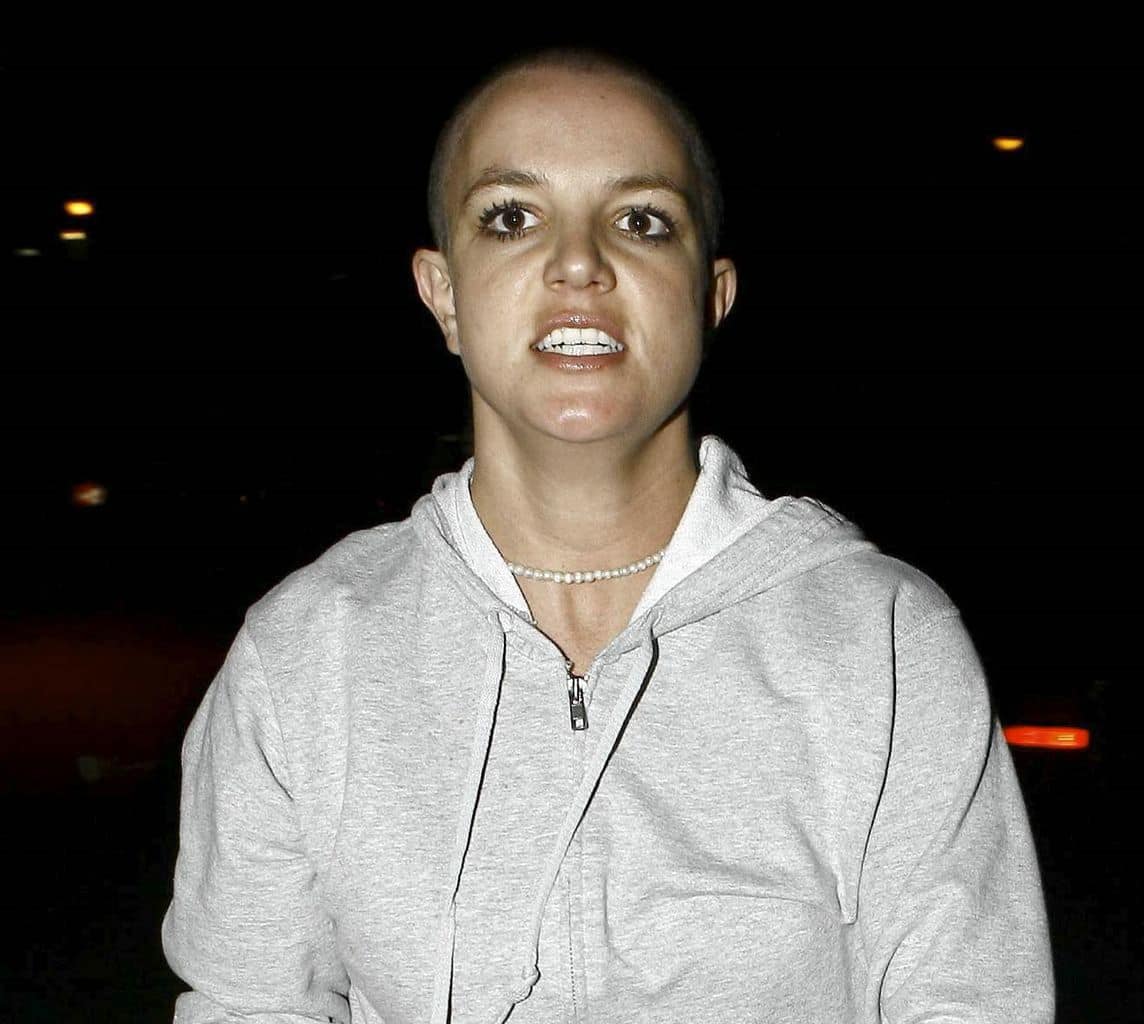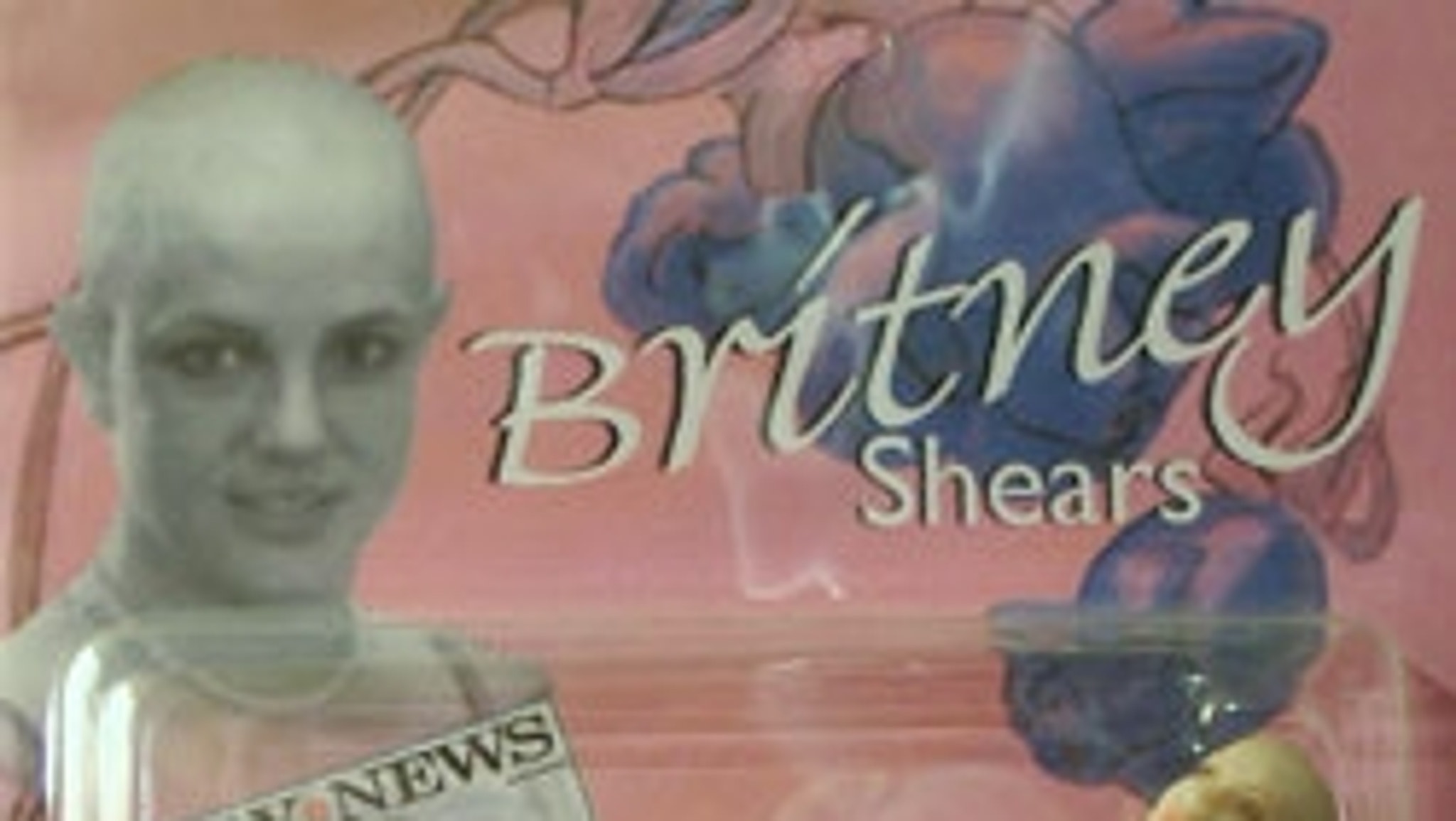The image of Britney Spears, pop icon and global sensation, shaving her head in 2007 remains one of the most indelible and shocking moments in modern pop culture history. For years, it was a symbol of a star's public breakdown, fodder for tabloids, and the subject of countless memes. Yet, behind the sensational headlines and the fleeting images, lay a deeper, more complex story of a young woman struggling for autonomy under an intense public gaze. Now, decades after becoming a household name, Britney Spears is ready to share her story, finally divulging why she shaved her head in 2007 in her new memoir, "The Woman in Me."
Anyone following pop culture in the early 2000s will recall the moment paparazzi captured Britney Spears shaving her own head. February 16 marks 15 years since this pivotal incident, a moment that captured a lot of things coming to a head – from the relentless influence of paparazzi in celebrity magazines to the rise of gossip bloggers. This article delves into the context, the incident itself, Britney's own revelations, and the profound impact this moment had on her life and the broader conversation around celebrity, mental health, and personal freedom.
Table of Contents
- The Woman Behind the Headlines: A Brief Biography of Britney Spears
- February 16, 2007: The Day the World Watched
- Beyond the Buzz: Understanding the Context of the Incident
- Britney's Voice: Unveiling the Truth in "The Woman in Me"
- The Aftermath: From Shaved Head to Conservatorship
- A Cultural Reckoning: "Bald Britney" in Pop Culture and Beyond
- The Conservatorship's Shadow: A Deeper Look at Legal Control
- Lessons Learned: Mental Health, Media Ethics, and Personal Autonomy
The Woman Behind the Headlines: A Brief Biography of Britney Spears
Early Life and Rise to Stardom
Britney Jean Spears, born on December 2, 1981, in McComb, Mississippi, and raised in Kentwood, Louisiana, showed an early aptitude for performance. Her journey to superstardom began with appearances on "The Mickey Mouse Club" in the early 1990s, alongside future stars like Justin Timberlake, Christina Aguilera, and Ryan Gosling. By the late 1990s, she had transitioned into a solo music career, releasing her debut album, "...Baby One More Time," in 1999. The album, propelled by its iconic title track and music video, became a global phenomenon, cementing Britney's status as a pop princess and a defining figure of the late 90s and early 2000s. Her subsequent albums, "Oops!... I Did It Again," "Britney," and "In the Zone," continued her reign, producing a string of chart-topping hits and solidifying her image as an energetic performer and a symbol of youthful pop culture. Her influence extended beyond music, encompassing fashion, dance, and a pervasive media presence. However, this meteoric rise to fame also brought with it an unprecedented level of scrutiny, setting the stage for the tumultuous events that would unfold in the mid-2000s.Personal Data & Biodata
| Category | Details |
|---|---|
| Full Name | Britney Jean Spears |
| Date of Birth | December 2, 1981 |
| Age (as of 2023) | 41 |
| Place of Birth | McComb, Mississippi, U.S. |
| Occupation | Singer, Dancer, Actress |
| Years Active | 1992–present |
| Genre | Pop, Dance-pop, Teen pop |
| Spouse(s) | Jason Allen Alexander (m. 2004; ann. 2004) Kevin Federline (m. 2004; div. 2007) Sam Asghari (m. 2022; sep. 2023) |
| Children | 2 (Jayden James Federline, Sean Preston Federline) |
February 16, 2007: The Day the World Watched
February 16, 2007, 9:41 am. These precise details, once etched into the public consciousness, mark the moment that the world witnessed a shocking act of defiance and desperation. On this day, pop star Britney Spears publicly shaved her head at Esther's Haircutting Studio in Tarzana, a suburb of Los Angeles. The incident unfolded dramatically, with paparazzi capturing every raw, unvarnished second. The images, showing Britney with clippers in hand, then a completely shaven head, spread like wildfire across the internet and traditional media, becoming an instant, undeniable global sensation. This was not a private moment; it was a public spectacle, fueled by the insatiable appetite of the burgeoning celebrity gossip industry. The "bald Britney" photos became iconic, instantly recognizable, and deeply disturbing. The raw vulnerability of the moment, coupled with the star's immense fame, ensured that it would be replayed, analyzed, and discussed for years to come. Newsweek, among other outlets, looked back at the accounts of those who spoke with her at the time, trying to piece together the narrative of a woman under immense pressure. It remains one of the most shocking moments in pop music, a visual shorthand for a star in crisis.Beyond the Buzz: Understanding the Context of the Incident
To truly understand the significance of the "bald Britney" incident, one must consider the relentless and often brutal context in which Britney Spears was living. In the early 2000s, the focus on her appearance was intense, bordering on obsessive. Every outfit, every hairstyle, every perceived misstep was dissected by a ravenous media. This era also saw the unprecedented rise of gossip bloggers like Perez Hilton and Pink in the New, who, alongside traditional celebrity magazines, obsessively captured and amplified the "rebellions/transgressions" of young female stars like Britney, Lindsay Lohan, and Nicole Richie. The line between public interest and outright harassment became increasingly blurred. The day before she shaved her head, Britney had reportedly left a rehab facility in Antigua, adding another layer of fragility to her situation. The pressure she faced was immense and unrelenting. She was a young woman, then 25, navigating global fame, a very public divorce from Kevin Federline, and a custody battle for her two young children. The paps' influence was at its peak, and they pursued her relentlessly, turning her life into a 24/7 reality show without her consent. This constant surveillance, the lack of privacy, and the feeling of being hunted undoubtedly contributed to the immense psychological strain she was under. The act of shaving her head, therefore, was not an isolated event but a culmination of years of intense scrutiny and a desperate cry for control in a world that seemed to offer her none.Britney's Voice: Unveiling the Truth in "The Woman in Me"
For years, the narrative surrounding the "bald Britney" incident was largely controlled by the media, painted as a sign of mental instability. However, in an exclusive excerpt from her forthcoming memoir "The Woman in Me," published by People, Britney Spears finally recalls what she was thinking during her infamous act. The iconic pop star, 41, has now divulged why she shaved her head in 2007, offering her own perspective on a moment that defined a tumultuous period in her life. Britney Spears explains why she shaved her head in 2007, discussing the intense focus on her appearance in her new memoir. She reveals that the difficult experiences she was enduring ultimately led to incidents such as shaving her head and attacking a paparazzo. The singer describes how she felt like she was constantly being looked at, objectified, and told what to do, even down to her hair. In her own words, the act of shaving her head was a radical assertion of autonomy. It was a desperate attempt to reclaim control over her own body and image, a symbolic act of defiance against the constant scrutiny and the feeling that she was being stripped of all her human rights. "I thought, 'I don't want anybody to touch me. I don't want anybody to touch my hair. I want to shave it off,'" she writes, revealing a profound desire to escape the commodification of her image. This revelation shifts the narrative from one of a breakdown to one of a desperate fight for self-preservation and identity.The Aftermath: From Shaved Head to Conservatorship
Following the incident at Esther's Haircutting Studio, Spears, then 25, checked into a rehab facility. The public shaving of her head sparked widespread concern for her mental health, and rightly so, as it was a clear indicator of distress. However, what followed was an unprecedented legal arrangement that would govern nearly every aspect of her life for over a decade. The incident ultimately landed her in a conservatorship that started in February 2008 and lasted until November 2021. This legal arrangement, typically reserved for individuals deemed unable to care for themselves, placed Britney's personal, medical, and financial decisions under the control of her father, Jamie Spears, and later, a professional conservator. During that time, the "Toxic" singer's personal and financial affairs were meticulously managed, ostensibly for her protection. However, as years turned into more than a decade, questions began to mount about the necessity and ethics of such a long-term, restrictive arrangement for a working artist. The conservatorship became a central point of contention, leading to the #FreeBritney movement, a fan-led campaign advocating for her freedom and autonomy. Her struggle within the conservatorship highlighted the potential for abuse within such systems and brought global attention to issues of legal guardianship and human rights.A Cultural Reckoning: "Bald Britney" in Pop Culture and Beyond
The "bald Britney" moment was more than just a fleeting celebrity scandal; it became a cultural touchstone. It captured a lot of things coming to a head in the early 2000s: the zenith of paparazzi influence, the nascent power of gossip blogs, and a public fascination with the downfall of pop princesses. The images and stories of Britney, alongside Lindsay Lohan and Nicole Richie, became obsessive content for bloggers like Perez Hilton, who thrived on documenting their "rebellions/transgressions." The visual impact of a globally recognized pop star shaving her head was so profound that it instantly permeated popular culture. Animated GIFs of "bald Britney" quickly became common on platforms like Tenor, allowing users to share the shocking moment in their conversations. Beyond internet memes, the image even found its way onto merchandise, with "bald Britney Spears T-shirts" available in various colors like black, gray, and white. This commodification of her distress further illustrates the public's complex relationship with celebrity, often turning personal struggles into entertainment. The "Britney Spears Breaking Point" documentary further discussed what happened to the bald celebrity, as verified by the tattoo artist who was with her on the same night, adding another layer of personal testimony to the public narrative. This moment, though painful for Britney, inadvertently forced a conversation about the ethics of media consumption and the intense pressures faced by those in the public eye.The Conservatorship's Shadow: A Deeper Look at Legal Control
The "bald Britney" incident, as shocking as it was, served as the catalyst for a much longer and more profound struggle: the conservatorship. This legal arrangement, which lasted from February 2008 until November 2021, stripped Britney Spears of virtually all her personal and financial autonomy. While initially presented as a necessary measure for her well-being, its longevity and the perceived lack of control she had over her own life raised serious questions about the nature of conservatorships and their potential for abuse. Many people, including some who initially supported the conservatorship, began to see it as an egregious example of stripping an individual of their human rights. The phrase "I thought Britney's case would open more people's eyes to how bad conservatorships are but seems like a lot of people just saw a new tool to use against people" reflects a growing public awareness and concern. Despite her continued work and public appearances, there were those who believed she should remain under conservatorship, sometimes citing trivial reasons like "just because she posts videos of her twirling on Instagram." This perspective highlights a dangerous tendency to deny individuals, especially those with past mental health struggles, their fundamental rights based on superficial observations. The "Toxic" singer's fight for freedom, culminating in the termination of her conservatorship, became a powerful symbol for advocates of disability rights and personal autonomy, shining a harsh light on the legal mechanisms that can trap individuals in a state of perpetual dependency. Her case underscored the critical need for robust oversight and clear criteria for the establishment and continuation of such restrictive legal arrangements.Lessons Learned: Mental Health, Media Ethics, and Personal Autonomy
The saga of "bald Britney" and the subsequent conservatorship offers profound lessons for society, touching upon critical issues of mental health, media ethics, and personal autonomy. Firstly, it served as a stark reminder of the immense pressure and scrutiny faced by celebrities, particularly young women, in the digital age. The relentless pursuit by paparazzi and the sensationalism of gossip media can have devastating effects on an individual's well-being. It underscores the importance of a more empathetic and responsible approach to celebrity news, moving beyond the mere consumption of spectacle to a deeper understanding of the human beings behind the headlines. Secondly, Britney's journey brought unprecedented attention to mental health struggles and the societal response to them. Her public breakdown, initially framed as a personal failing, has since been re-contextualized as a desperate cry for help from someone overwhelmed by external pressures and a lack of control. It highlighted the need for compassion, professional support, and understanding, rather than judgment and exploitation. Finally, the conservatorship case became a global rallying cry for personal autonomy and human rights. It forced a re-evaluation of legal systems that can strip individuals of their basic freedoms, even when they appear capable of managing their own lives. The "wanting to strip people of all their human rights just" for perceived eccentricities or past struggles is a dangerous precedent. Britney Spears's decision to share her story in "The Woman in Me" is not just a personal triumph but a significant contribution to these ongoing conversations, empowering others to advocate for their own rights and challenging the narratives that seek to define them.Conclusion
The image of "bald Britney" from February 2007 is more than just a fleeting moment of celebrity drama; it is a powerful symbol of a woman's struggle for control, identity, and freedom under the glare of an unforgiving public eye. For years, it was misinterpreted, sensationalized, and used to define a period of intense vulnerability for Britney Spears. However, with the release of her memoir, "The Woman in Me," Britney has finally reclaimed her narrative, offering her truth about why she shaved her head – an act of desperate defiance against a life where she felt stripped of all autonomy. From the relentless paparazzi and the burgeoning gossip blogosphere that fueled the spectacle, to the subsequent 13-year conservatorship that controlled nearly every aspect of her life, the "bald Britney" incident marked a turning point. It exposed the dark underbelly of celebrity culture, the complexities of mental health, and the profound implications of legal systems that can disempower individuals. Britney's journey from a pop princess to a symbol of resilience, culminating in her fight for freedom, has sparked crucial conversations about media ethics, personal rights, and the importance of listening to and believing those who have been marginalized. Her story is a testament to the human spirit's capacity to endure and ultimately, to reclaim one's voice. What are your thoughts on Britney's revelations in "The Woman in Me"? How has your perception of the "bald Britney" incident changed over time? Share your comments below and join the conversation. If you're interested in learning more about the intricacies of conservatorships or the impact of media on mental health, explore other articles on our site.- Sidney Hicks
- Matthew Mcconaughey And Woody Harrelson
- Dungeons And Dragons Cast
- Jake Cannavale
- Who Is Jjs Dad


